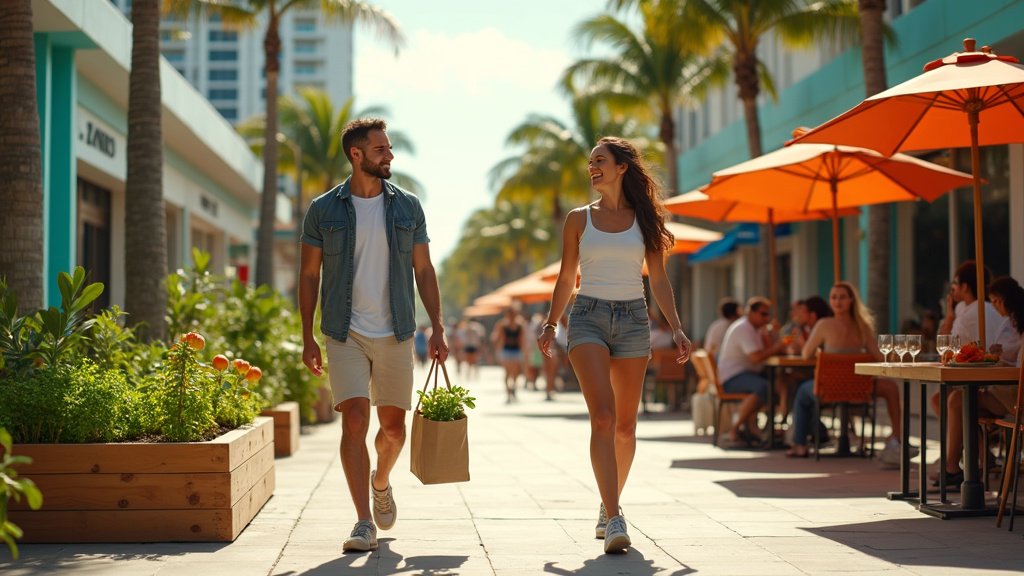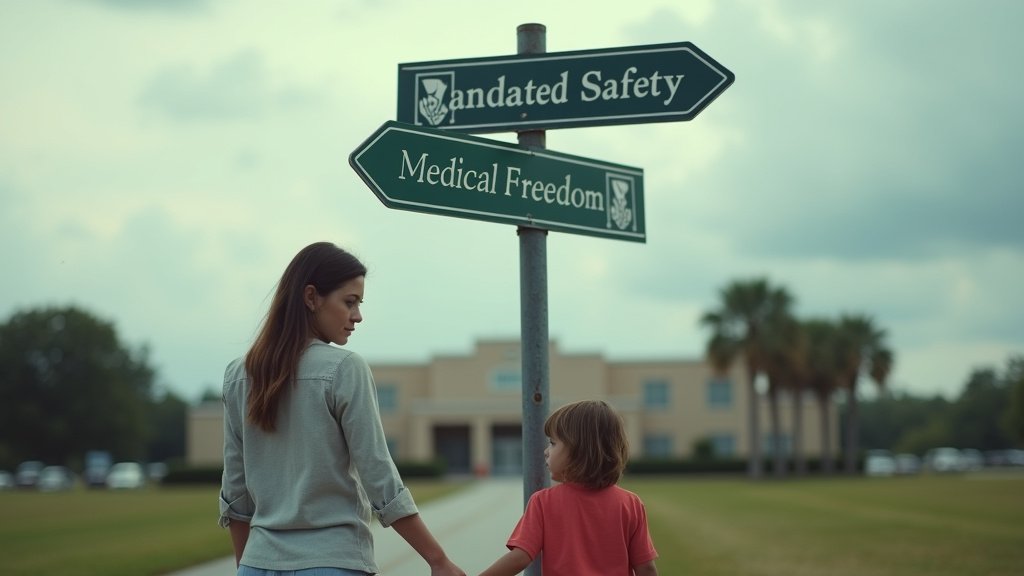Miami Beach is embarking on a significant, multi-year transformation to become a Blue Zones® certified city, a designation recognizing communities that foster longer, healthier lives. This ambitious initiative, led by Mayor Steven Meiner, leverages strategic partnerships and a comprehensive, environmental approach to well-being. The city is dedicating approximately four years to this transformation, following an initial nine-month foundational planning phase. The goal is to make healthy choices the easy, and even unavoidable, choice for all residents and visitors.
The Blue Zones Project, founded on the research of National Geographic Fellow Dan Buettner, identifies nine common lifestyle and environmental traits found in regions with the world’s longest-living and healthiest populations. These include moving naturally, having a sense of purpose, eating in moderation (80% full), prioritizing plant-based diets, moderate wine consumption, belonging to a community, putting loved ones first, and having a supportive social network. The project’s core philosophy is to shift the focus from individual behavior change to transforming the community’s environment—its policies, systems, surroundings, and social networks—to naturally encourage healthier habits.
Miami Beach’s journey toward Blue Zones certification began with a six-month readiness and feasibility assessment, known as Blue Zones Ignite, launched in February 2025. This initial phase involved a structured exploration by Blue Zones experts to evaluate the city’s current state of well-being, identify strengths, challenges, and opportunities, and develop a blueprint for transformation. This assessment was supported by a $220,000 investment from the city. The city is now actively seeking partnerships and an estimated $1.5 million annually for five years to fund the subsequent phases of the project.
Key partners in this initiative include major healthcare institutions like Mount Sinai, Jackson Health System, and the University of Miami. These collaborations are crucial for integrating health and wellness strategies across the community. Commissioner Tanya Bhatt has been instrumental in championing this effort, working to secure community partners and funding to underwrite the program.
Mayor Steven Meiner views the Blue Zones initiative as a natural fit for Miami Beach’s brand, which already boasts beautiful beaches and a vibrant atmosphere. He anticipates significant economic benefits and savings over a 10-year span, alongside improved community health and productivity. The city’s existing amenities, such as Muscle Beach, fitness equipment, and pedestrian-friendly areas like Lincoln Road, provide a solid foundation, but the project aims to enhance these and address challenges like traffic and development.
The Blue Zones Project is not merely about individual choices; it is about systemic change. By influencing the “Life Radius”—the area close to home where people spend most of their lives—the project aims for lasting improvements in public health outcomes, reduced healthcare costs, and increased economic vitality. Cities that have successfully become Blue Zones-certified have seen reductions in obesity, smoking, and depression rates, while also improving overall life satisfaction.
The city is currently in discussions with potential sponsors and partners, including healthcare providers, insurance companies, and local organizations, to secure the necessary funding. The goal is to establish a five-year partnership that will support the implementation of policy changes, environmental enhancements, and community programs designed to make healthy living the default. This includes initiatives focused on improving walkability, increasing access to healthy food options, and fostering stronger social connections among residents.
The transformation process is designed to be phased, starting with assessment and planning, followed by implementation and ongoing community engagement. This multi-layered approach ensures that the changes are sustainable and deeply integrated into the fabric of Miami Beach. The ultimate vision is for Miami Beach to become a leading example of a Blue Zones-certified community, demonstrating how strategic environmental and policy changes can lead to longer, healthier, and happier lives for its residents and visitors, solidifying its reputation not just as a tourist destination, but as a hub for comprehensive well-being. This editorial news aims to provide a clear overview of this significant development for Miami.
A Foundation for Health: The Blue Zones Philosophy
The Blue Zones Project operates on a distinct premise: that true well-being stems from the environment in which people live, work, and play, rather than solely from individual willpower. Inspired by regions globally where populations exhibit exceptional longevity and health—such as Okinawa, Japan; Sardinia, Italy; Ikaria, Greece; and the Nicoya Peninsula, Costa Rica—the project distills nine core principles that contribute to these outcomes. These principles, often referred to as the “Power 9,” are not prescriptive diets or rigorous exercise routines, but rather organic lifestyle habits deeply embedded in the daily lives of centenarians. They include moving naturally, such as through gardening or walking, rather than structured gym workouts; having a clear sense of purpose or “Ikigai”; moderate eating, stopping when 80% full; a diet that is predominantly plant-based (“Plant Slant”); moderate consumption of alcohol, typically wine with meals (“Wine at 5”); a strong sense of belonging through community or spiritual practice (“Belong”); prioritizing family and social connections (“Put Loved Ones First” and “Right Tribe”); and managing stress effectively (“Down Shift”). The Blue Zones approach seeks to engineer community environments that naturally encourage these behaviors, making healthy choices the path of least resistance.
The Miami Beach Initiative: From Assessment to Transformation
Miami Beach’s path to becoming a Blue Zones city is structured into distinct phases, beginning with an in-depth assessment. The “Blue Zones Ignite” phase, a six-month readiness and feasibility study launched in February 2025, marked the formal commencement of this journey. During this period, Blue Zones experts collaborated with city leaders and community stakeholders to evaluate Miami Beach’s existing infrastructure, social networks, policies, and overall environment through a “Readiness Assessment”. This assessment aimed to identify the city’s current strengths, pinpoint areas for improvement, and lay the groundwork for a tailored transformation plan.
Following the assessment, the Blue Zones Project moves into an implementation phase, which is projected to take approximately four years. This phase involves the development and execution of sustainable policy changes and environmental modifications designed to foster healthier lifestyles. The city is actively pursuing partnerships and funding to support this extensive undertaking, with Mayor Meiner anticipating significant long-term economic benefits and cost savings for the community. Commissioner Tanya Bhatt has been a key advocate, spearheading efforts to secure financial backing and community buy-in from organizations like Mount Sinai, Jackson Health System, and the University of Miami. The ambition is to integrate wellness into every aspect of city life, from worksites and schools to restaurants and neighborhoods, ensuring that healthy choices are not an exception but the norm.
Anticipated Impact and Economic Benefits
The integration of the Blue Zones framework into Miami Beach is expected to yield substantial positive impacts, extending beyond individual health to encompass broader economic vitality. Research from existing Blue Zones communities consistently shows a correlation between improved well-being and significant cost reductions in healthcare. By making healthy lifestyles more accessible and ingrained in daily routines, the initiative aims to lower rates of chronic diseases, thereby reducing healthcare expenditures for both individuals and the city. Mayor Meiner projects these initiatives could lead to considerable savings over a 10-year period.
Furthermore, enhanced community well-being is directly linked to increased productivity in the workforce and a boost in civic pride and overall quality of life. A healthier population is a more engaged and productive one, which can attract businesses and talent, further stimulating economic growth. The transformation is also designed to reinforce Miami Beach’s image as a premier destination, not just for tourism but as a place where residents can thrive in a supportive and health-conscious environment. The project’s emphasis on creating healthier, more walkable, and socially connected neighborhoods is anticipated to enhance the city’s appeal and livability for both current residents and prospective newcomers.
Challenges and Future Outlook
While Miami Beach possesses many inherent qualities conducive to a Blue Zone, such as its active outdoor lifestyle and numerous green spaces, the city also faces unique challenges. These include issues related to traffic, development, affordability, and food insecurity, which were noted during the initial assessment phases. The Blue Zones approach is designed to address these challenges by implementing systemic changes, such as improving walkability, creating accessible green spaces, and advocating for policies that support healthy eating environments.
The success of the initiative hinges on continued community engagement, robust partnerships, and sustained funding. The city is actively seeking $1.5 million annually for five years from community partners to fully implement the Blue Zones Project. Commissioner Bhatt has expressed optimism, noting positive reception from potential partners and stakeholders. The long-term vision is for Miami Beach to not only achieve Blue Zones certification but to serve as a model for other communities, demonstrating how a concentrated, multi-year effort can fundamentally reshape a city for the better, fostering an environment where residents can truly live longer, healthier, and happier lives. The ongoing news surrounding this initiative highlights Miami’s commitment to this transformative goal.





